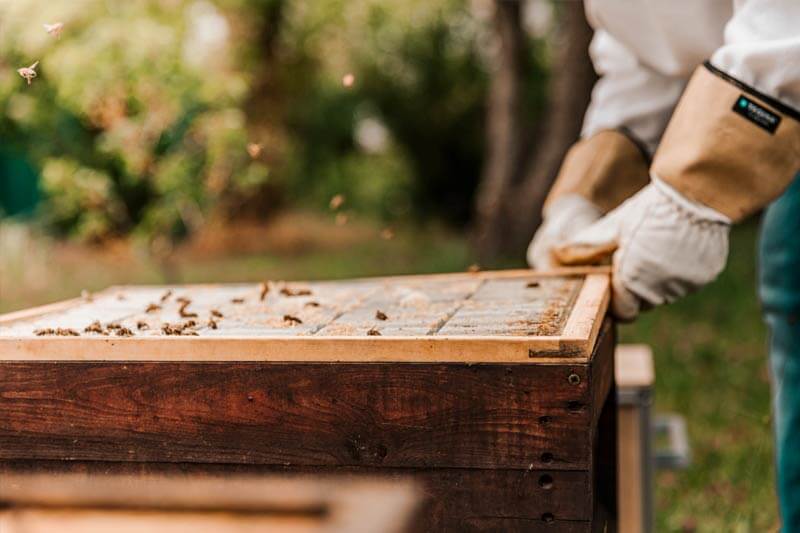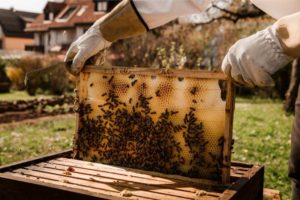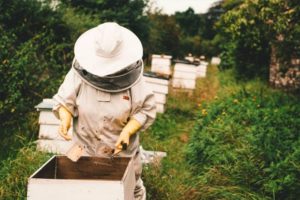Whether beekeeping becomes your hobby or profession, you’ll most likely be stung. If you’re similar to the average beekeeper, you will be stung an average of 58 times per year.8 This is one of the significant dangers of backyard beekeeping. Keep yourself informed of these dangers and the steps you can take to stay safe.
The Two Biggest Dangers of Backyard Beekeeping
Danger #1 – Being Stung
While stings hurt, the concern here is a severe form of allergic reaction called anaphylaxis. Beekeepers are at a higher risk for a bee sting allergy, and each year 60 people die in the United States from a bee sting reaction.2
Do you know if you have an allergy?
If your last sting resulted in unpleasant symptoms, you might want to be tested by a local medical provider.
Danger #2 – Someone Else Being Stung
If you have roommates, a partner, or children, make sure you know their risk for an allergic reaction. Also, teach them about bee safety as a precaution. And if you have neighbors, it’s always a good idea to share your plans with them. Make sure they are knowledgeable about bees and beekeeping.
Stay Safe
You don’t have to resign yourself to being stung an average of 58 times per year. Instead, you can take preventative steps to care for yourself and those around you. Your next sting can be worse than your last, and a severe allergic reaction can occur within minutes. So, do your best to follow these five safety tips.
5 Safety Tips to Avoid the Dangers of Backyard Beekeeping
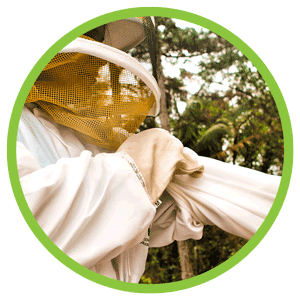
1. Always Wear Your Protective Gear
Less than half of all beekeepers wear all the protective gear they should!8 While seasoned, non-allergic beekeepers may feel confident doing so, it’s essential that new beekeepers understand the risks. The right protective equipment covers all your skin and eliminates the possibility of being stung. Sure, it takes time, but it’s worth it.
Make sure to wear:
- A suit or jacket
- Veil
- Gloves
- Boots
While you should wear all of these, always wear your veil. A sting to the eyes can do severe damage. It’s not worth the risk! Also, when you purchase protective gear, make sure it fits well. You’ll want to make sure elastic or closures will prevent bees from finding a way up a pant leg or sleeve. Then, when you put on your gear, ask someone to make sure all the zippers and closures are secure.
Your gear should be light-colored and smooth. These are far less likely to frustrate bees, unlike dark and fuzzy fabrics. Remove your jewelry and secure your hair before checking on your bees.
Lastly, make sure you are not wearing any strongly scented products.
2. Understand Your Hive
First, make sure you know what breed of honey bee you have or are looking to obtain. Are the bees known for being docile? Different species of honey bees have different temperaments, so this is vital information! If you already have an aggressive hive, talk to a queen breeder. You can replace your queen with a milder breed to help calm the colony.
The placement of your hive will also affect their mood. Make sure the entrance of the hive is free from disturbance. You don’t want it near a walkway or place people frequent. Then, when you approach the hive, it’s best to come from the back or side. That way, you don’t anger the guard bees.
Did you just finish mowing near the hive? The vibrations and fumes most likely aggravated the bees. And if it is a dark or rainy day, you can bet worker bees are in the hive for the day. Pay close attention to these factors and the mood of the colony. You can always come back another time instead of intruding when the situation is unpredictable.
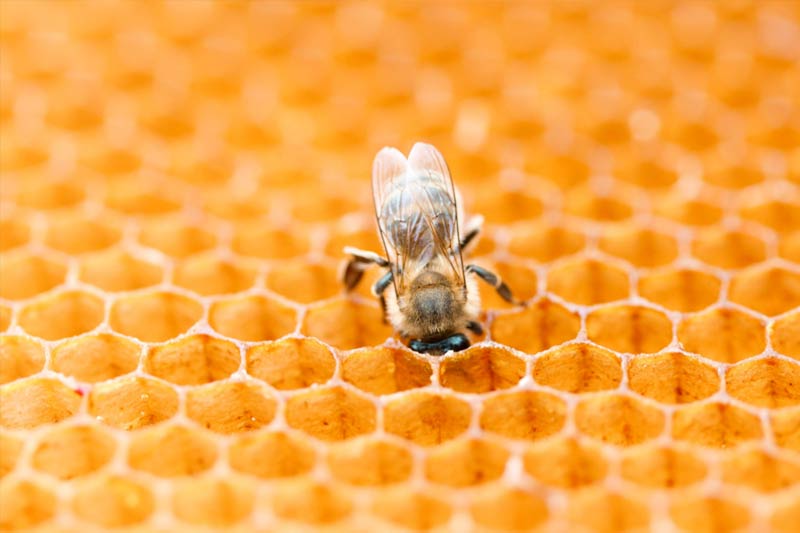
3. Be Cautious and in Control
After you’ve considered how your hive is doing, think about how you are doing. Are you nervous? Impatient? Fearful? Emotions like these can lead to mistakes and erratic behavior. If you’re expressing anxiety, the bees may also find a reason to be concerned. Make sure before you approach the hive that you are in control. Be calm, deliberate, and slow.
4. Use a Smoker
A smoker is the best way to keep bees docile. When bees are nervous, they emit an alarm pheromone that the rest of the colony can sense. Before you know it, the whole hive is upset! But with a smoker, you can cover up this natural defensive response long enough to tend to the hive. After applying a couple of puffs, wait a few minutes to let the smoke take effect.

5. Create a Sting Action Plan
Just like you have a plan in case of a fire or a tornado, make sure you have a plan for a bee sting. Sure, the stinger is small, and perhaps the pain is minimal, but it can be hard to know when a sting will produce an allergic reaction. These allergic reactions can come on very quickly and even be deadly. So, take it seriously!
Here are a few main points to add to your sting action plan:
Move to a Safe Place
After a bee sting, immediately leave the area to prevent additional stings. Pick this place ahead of time and keep a first aid kit there. A few essential items to keep around are an ice pack, antihistamine cream and pills, an epinephrine pen if you are prescribed one, a sting scraper, and alcohol wipes.
Remove the Stinger
Take out the stinger as soon as possible. Honey bees also leave a sac of venom along with their stinger, so the longer it stays in your skin, the worse your reaction could be. However, do not remove the stinger by pinching. Doing so will push the venom out of the sac.
Instead, keep a small knife or old credit card in your sting first aid kit. Scrape the stinger out of your skin. Another option is to use your fingernail, if possible.
Care for Your Wound
Next, use an alcohol wipe or other first-aid item to clean the area. Bandage it if necessary. Then, take an antihistamine, ibuprofen, or other pain relievers if you’d like.
Monitor Yourself
For at least the next 30 minutes, pay close attention to your symptoms. If you begin to show signs of a severe allergic reaction, call 911 and administer an epinephrine pen if possible.
Some signs of a severe allergic reaction include:
- Trouble breathing
- Hives or swelling
- Tightness of the throat
- Hoarse voice
- Nausea
- Vomiting
- Abdominal pain
- Diarrhea
- Dizziness
- Fainting
- Low blood pressure
- Rapid heartbeat
- Cardiac arrest
If you have a mild reaction to the sting, contact a local medical professional. Not all bee stings are the same, and your next one could be much worse. It’s best to be tested for a bee sting allergy and understand your treatment options! For instance, you could start venom immunotherapy treatment, reducing your risk of anaphylactic shock by up to 98%.3
Stay Safe, Backyard Beekeepers!
With these simple steps, you can avoid the dangers of backyard beekeeping. You may avoid being stung, and better yet, a life-threatening emergency. So, be smart, think ahead, and take the time necessary to care for yourself and your bees. It’s worth it!


